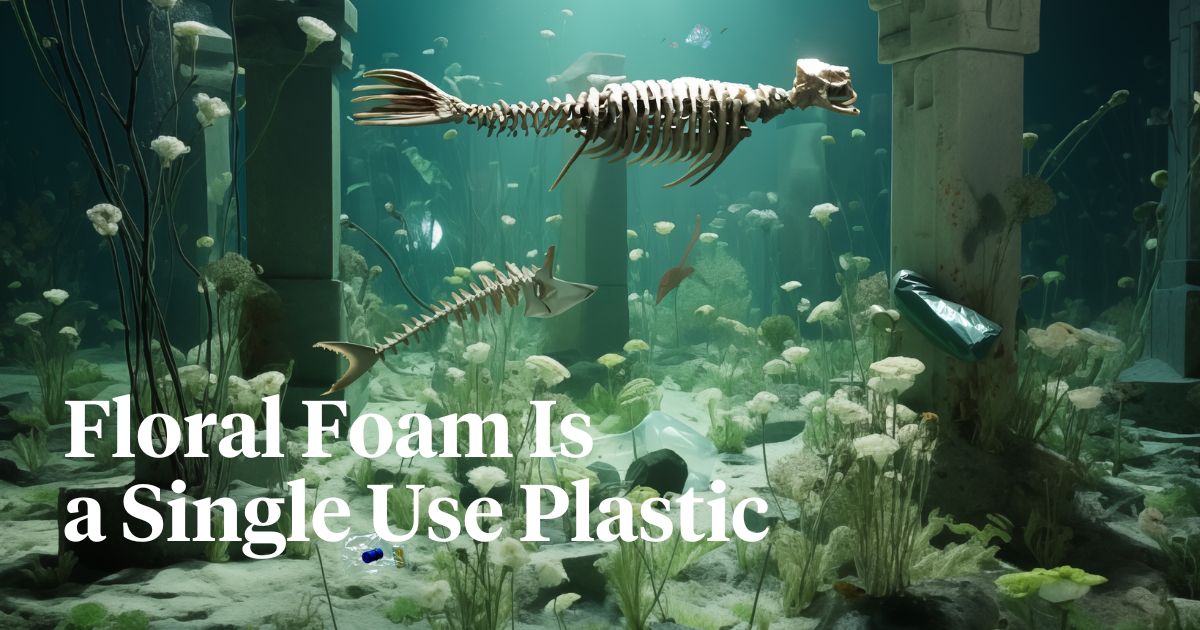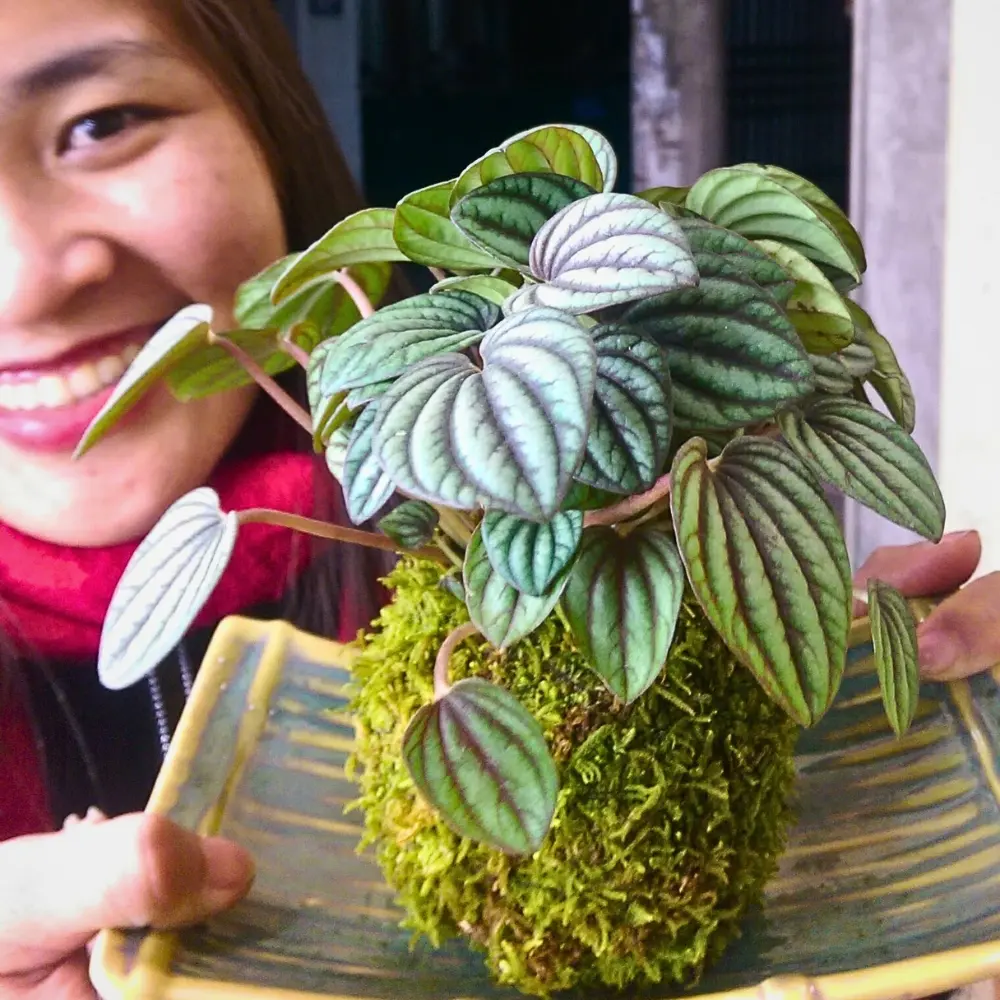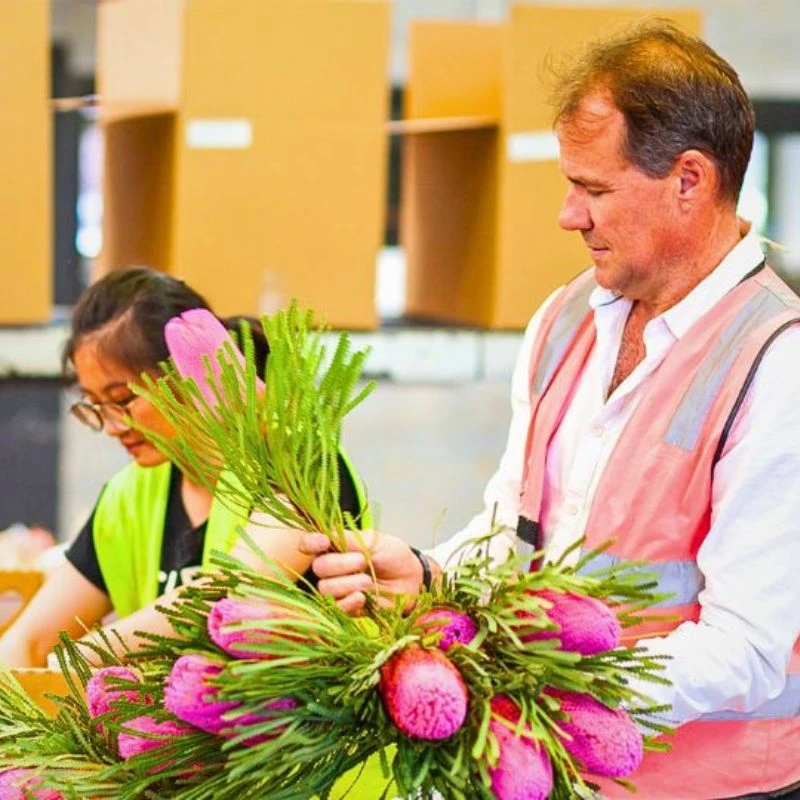Floral foam, the material widely used in the flower industry, is often associated with convenience and ease while creating floral arrangements. For the past at least 60 years, it has been the most popular base for floral designs and creations. Basically, it is intended use is to hold and retain water for the flower and also create stability in flower arrangements that require more structure, making them more rigid. For some flower design purposes, some may say it's the only material with which some designs can be made.
However, despite its widespread - and practically popular use - floral foam has increasingly come under intense scrutiny for its negative impacts. While on one hand, it has grown into almost a must-have in flower arrangements, on the other hand, it is considered detrimental in numerous ways. From its damaging effects on the environment to its health risks, this material just has a way of making headlines. And not in a positive way.
So, What is Floral Foam?
Also known as phenolic foam, floral foam is a spongy, man-made material specifically designed to retain water and provide support for flower arrangements. It is typically green in color and comes in various shapes and sizes.
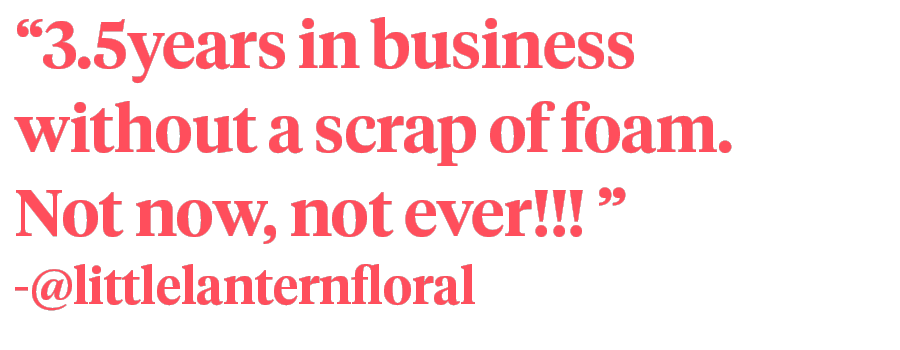
Invented in the 1950s by product designer Vernon Lewis Smithers, the founder of Smithers-Oasis, an Ohio-based company specializing in floristry products, floral foam is largely composed of phenol formaldehyde, a type of synthetic plastic. Its design makes it possible for it to hold water for extended periods, allowing cut flowers to stay hydrated and remain in place within arrangements. Accordingly, due to its convenience, a huge percentage of florists and floral designers across the world use it in their arrangements. Nowadays it is produced by different brands. And nowadays we know more than back then.
For florists, it holds many benefits. For one, it can, conceivably, hold more water than its weight providing a water source and stabilizer that keeps flowers fresh-looking for longer. What’s more, it is light, durable, and easy to cut and mold, making it an easier material to transport when used in floral arrangements. In addition, floral foam is malleable and provides stability to arrangements, preventing flowers from shifting or falling out of place. These qualities make it a resource-efficient material for florists and floral designers.
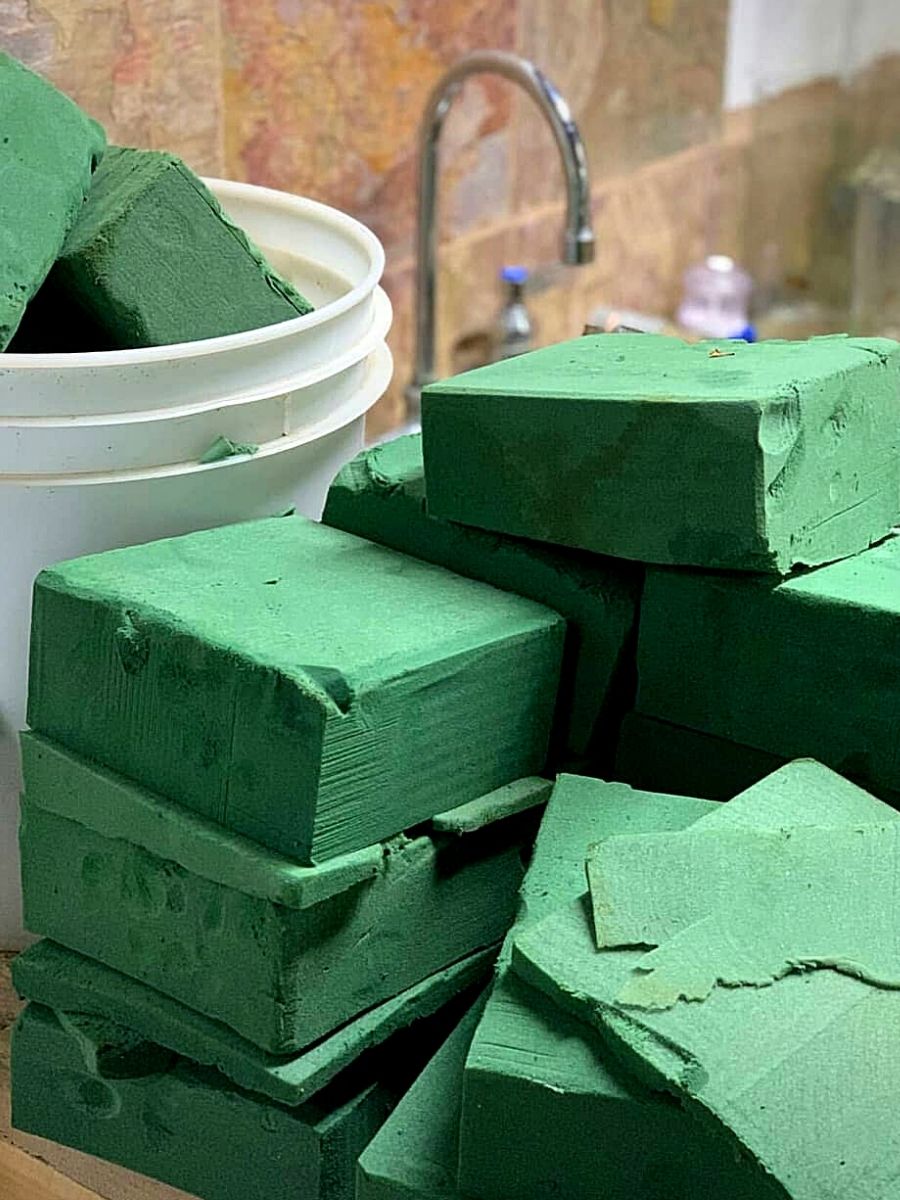
Photo by @nofloralfoam
These reasons would, perhaps, explain why it has been widely embraced by the flower industry, a development reinforced by the material's creators' assurance of their commitment to sustainability.
What Are the Concerns Around Floral Foam?
But despite its popularity, floral foam has increasingly faced criticism due to its adverse impacts not just on the environment but also health-wise for people. With the current floral trends that lean more towards sustainability and - to a great extent - health and safety, concerns have constantly been raised about this material which generally – and quite ironically - comes in the green color associated with nature and everything organic and biodegradable.
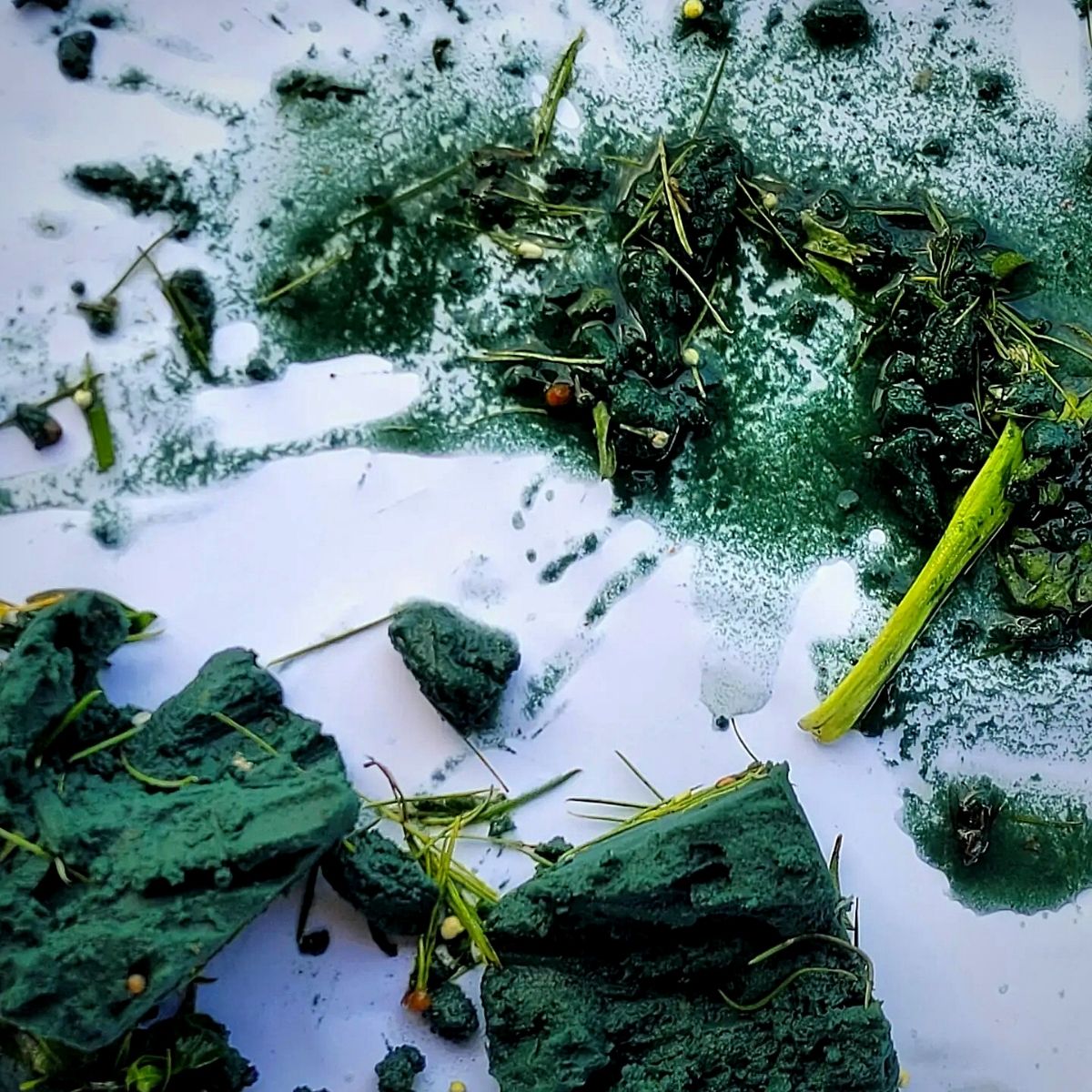
Photo by @nofloralfoam
So, what is it about this material that causes all the furor?
The health and environmental impacts of floral foam are a growing concern due to its non-biodegradability, contribution to microplastic pollution, chemical leaching, limited recycling options, and being an unsustainable resource consumer.
How about we explore these aspects in more detail?
For starters, floral foam is made from non-biodegradable plastic, primarily phenol-formaldehyde. Once discarded, it does not break down naturally and - definitely - persists in the environment indefinitely. What does that mean? This means it creates long-term microplastic pollution and accumulation of waste in landfills.
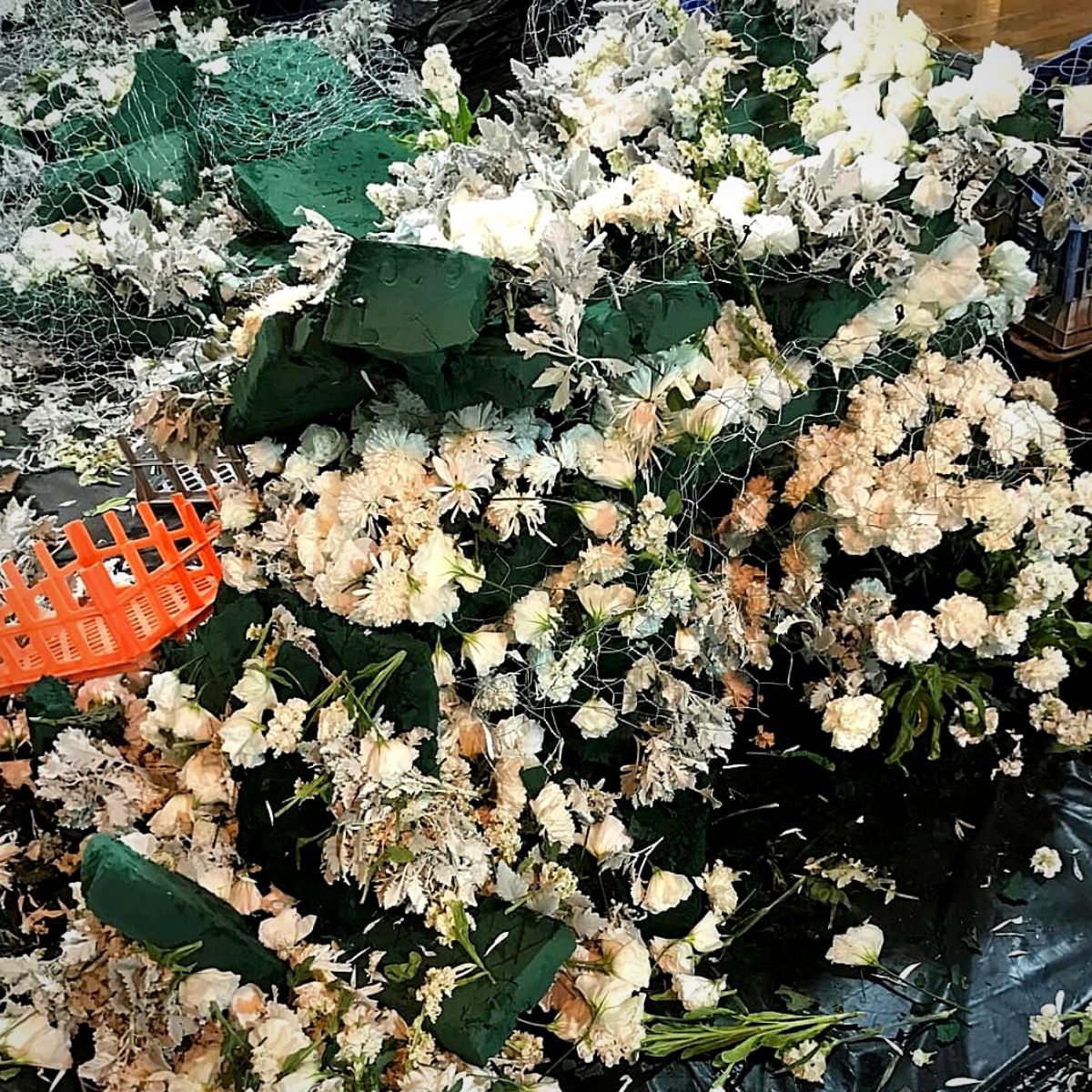
Photo by @nofloralfoam
Microplastic pollution arises from the material’s obstinate non-biodegradable nature, which means even though it may degrade - because it sometimes does not break down at all - it does so over hundreds or thousands of years. And when it perhaps does, it still breaks down into smaller particles, which linger on and in turn contribute to the microplastic pollution crisis. Microplastics can infiltrate ecosystems, posing risks to wildlife, marine life, and even human health when consumed through the food chain.
"We’ve banned floral foam at our wedding venues here. Once we realised how bad it was, it was a no brainier - we just don’t want that here! And there are so many other options that still work beautifully. Flowers should be beautiful but there’s no need to poison the planet to achieve incredible installations. 🌿"
Disposal of floral foam is, therefore, a key challenge. Oftentimes, those who use it discard it in sinks and drains which, ultimately and over time, get clogged and the material, eventually, still finds its way into the environment, posing a threat to the sustainability and health of humans and wildlife.
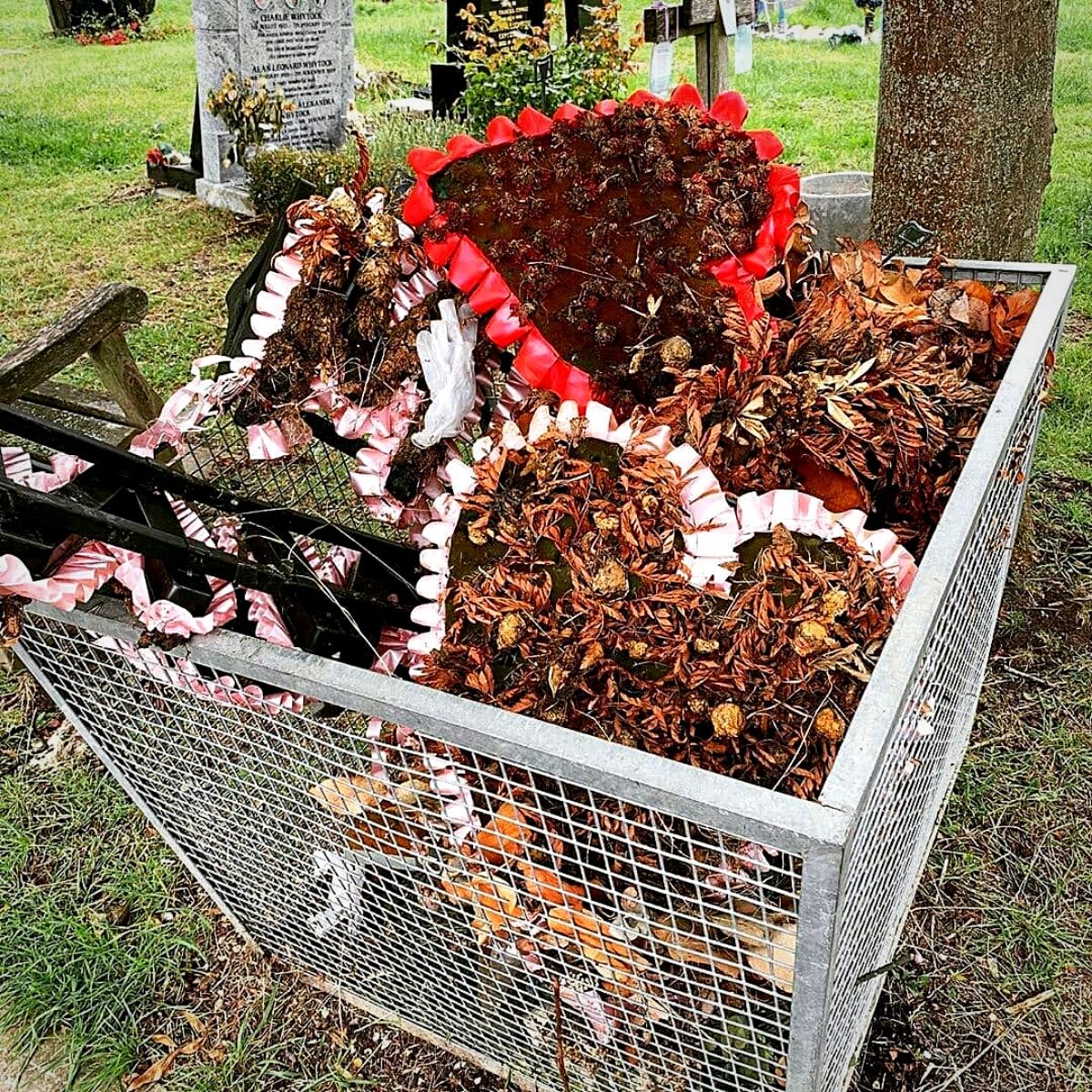
Photo by @nofloralfoam
Floral foam, likewise, contains various chemicals - and toxins - which it releases to the environment. It, for instance, contains formaldehyde, a volatile organic compound (VOC) which is a known carcinogen, phenol, and carbon black, all of which it releases to the environment.
It also may contain various other additives, such as dyes, antimicrobial agents, and flame retardants. These additives can introduce additional chemicals into the environment when the foam breaks down. While the specific health risks associated with these additives may vary, their presence still raises concerns about their potential toxicity and detrimental environmental impact.
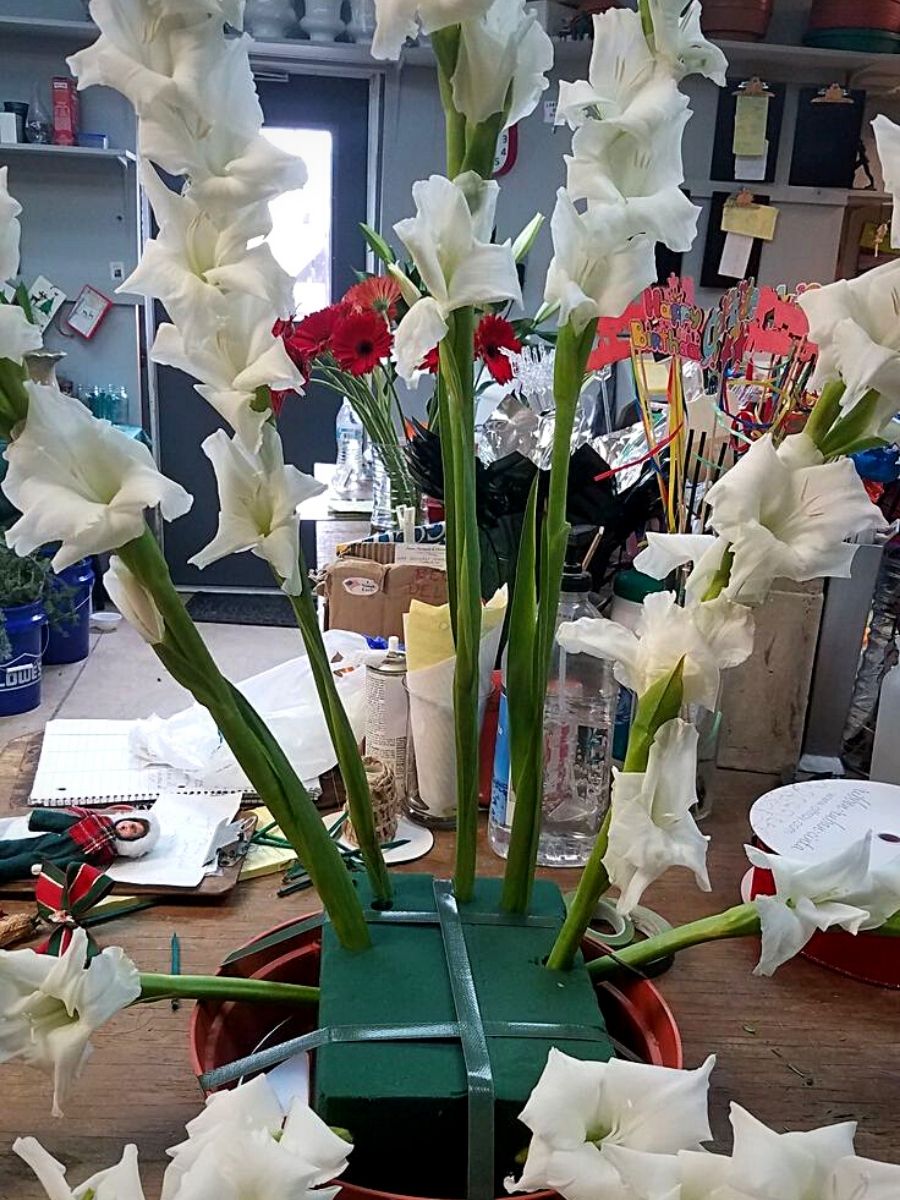
Hence, when the material comes into contact with water, these chemicals and additives potentially leach into the surrounding environment, contaminating the water sources and posing health risks to both humans and aquatic animals.
What’s more, florists, flower hobbyists, and floral designers who constantly - and regularly - use floral foam stand a great chance of being exposed to hazardous chemicals, increasing their risk of health problems. Protracted exposure to formaldehyde can cause respiratory issues, skin irritation, and allergic reactions. Individuals with conditions like asthma or sensitivities to chemicals may be particularly susceptible to these health effects.
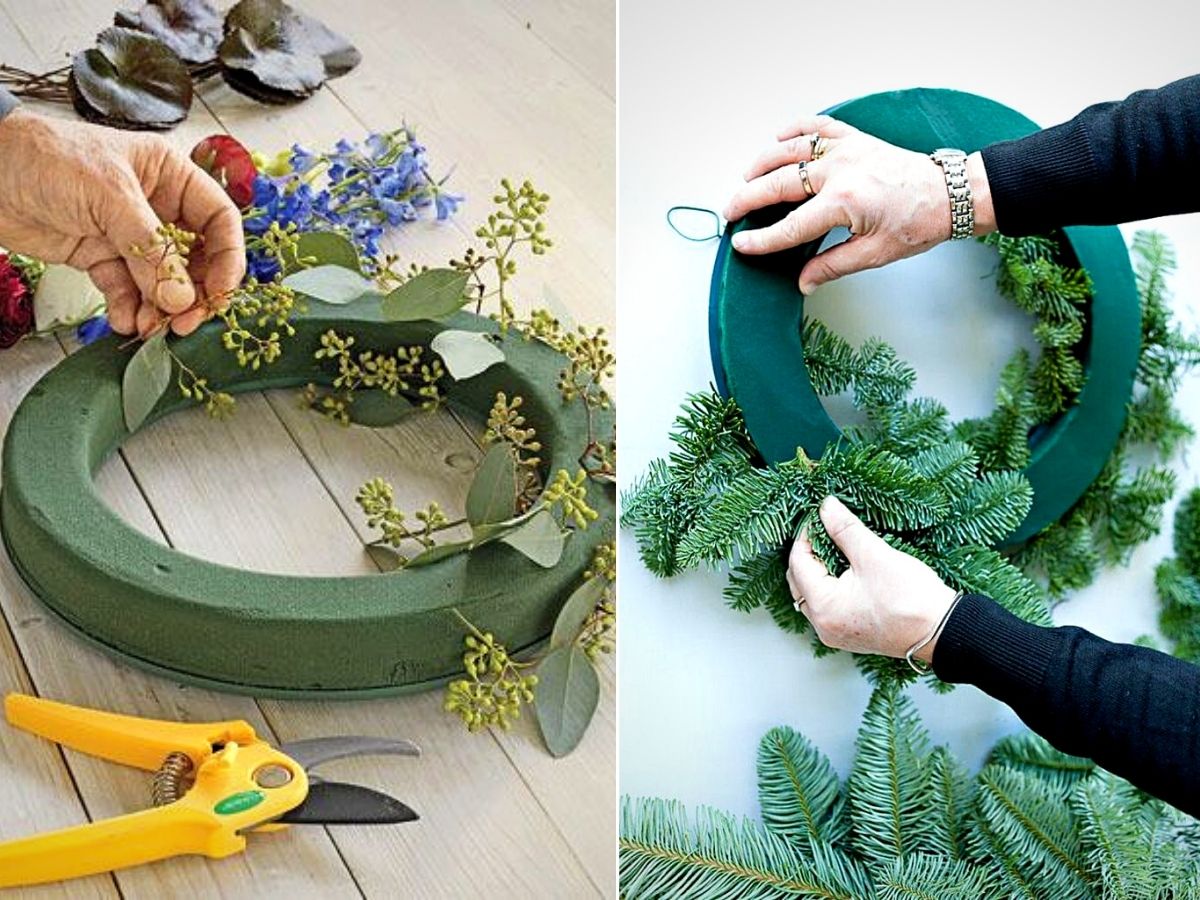
Photos by Country Living Magazine and A Piece of Rainbow
Additionally, in the course of its production, floral foam emits hazardous compounds that potentially contribute to air pollution and harm both wildlife and human health, and the environment. Moreover, its industrial manufacturing process involves greenhouse emissions that heighten the challenge of climate change, which is quite a crucial issue in modern society. In this context, the production of floral foam requires the extraction of non-renewable resources, such as petroleum and natural gas. And the energy-intensive manufacturing process, in turn, contributes to greenhouse gas emissions and further intensifies the depletion of valuable natural resources.
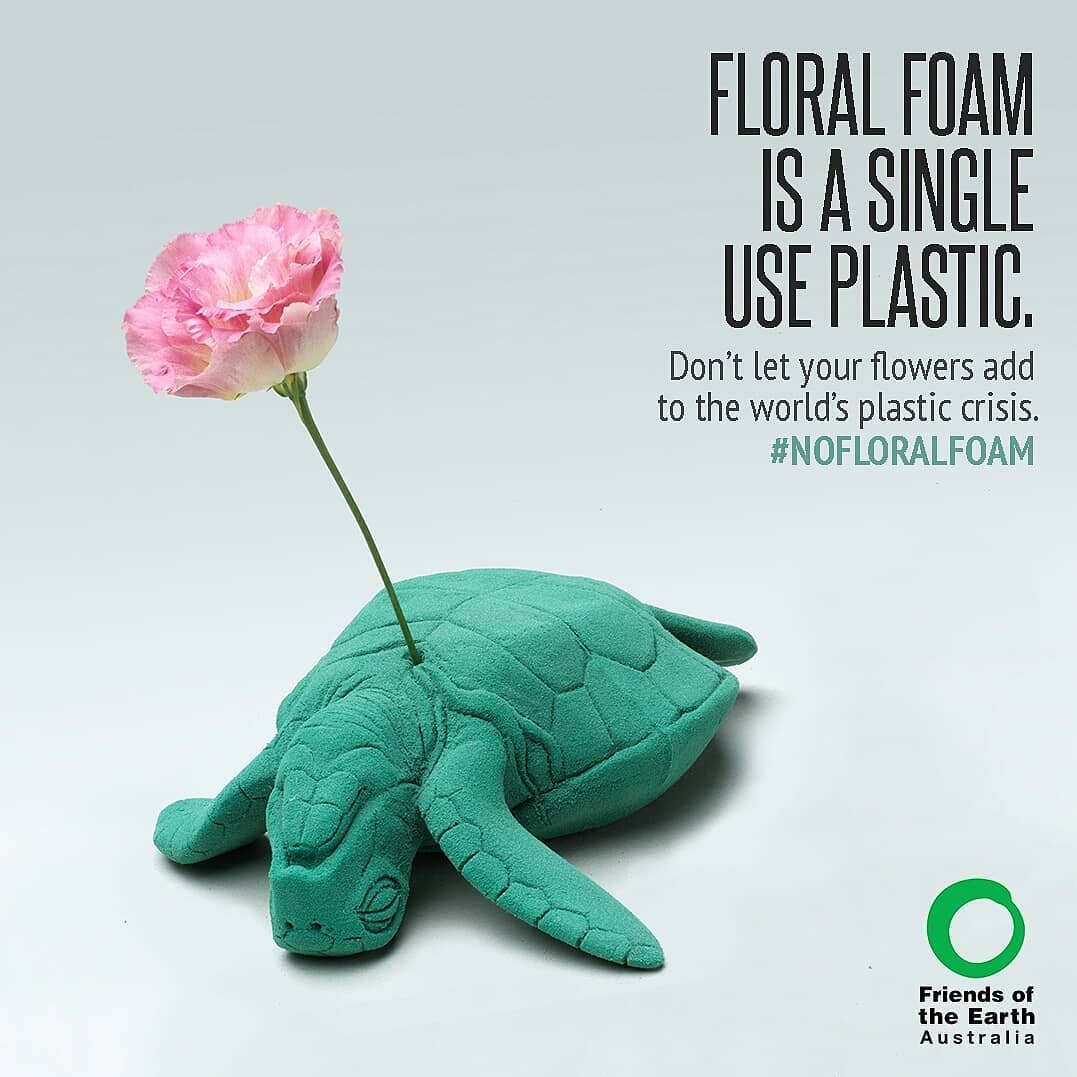
Still, recycling floral foam is a challenge due to its complex composition, which includes a mixture of plastic resins and numerous other compounds. This lack of proper recycling facilities and mechanisms further compounds the problem it poses, leading to a huge portion of the floral foam produced ending up in landfills, sinks or drains. The inability to effectively recycle floral foam, therefore, adds to the buildup of plastic waste and worsens environmental degradation. It also means that the plastic pollution cycle endures.
Are There Alternatives? Should You Make the Switch?
While it is worth noting that the health risks associated with floral foam primarily stem from occupational exposure and long and repeated contact, and its environmental damage caused by its inability to biodegrade and hence persist in the environment, it still is vital to consider its environmental concerns and the potential health risks it portends.

Photo by @bluejasminefloral
It, accordingly, is crucial to explore sustainable alternatives. And yes, there are numerous such options that savvy florists, flower hobbyists, and floral designers can use instead. One, for instance, could use eco-friendly wrapping techniques, which include exploring the possibility of organic and biodegradable materials like foliage, branches, or even reusable containers filled with water to hold flowers in place.
Small plastic tubes or vials can, also, be filled with water and attached to individual stems, providing hydration without the need for floral foam. Also, floral wires and tape can be used to secure flowers in arrangements without the need for this material. These products are widely available, inexpensive, and importantly, environmentally friendly. They are particularly suitable for delicate flowers or foliage.
You can think of using wire in combination with moss, weaved branches, or use alternative plastic-free floral blocks that are on the markets today.
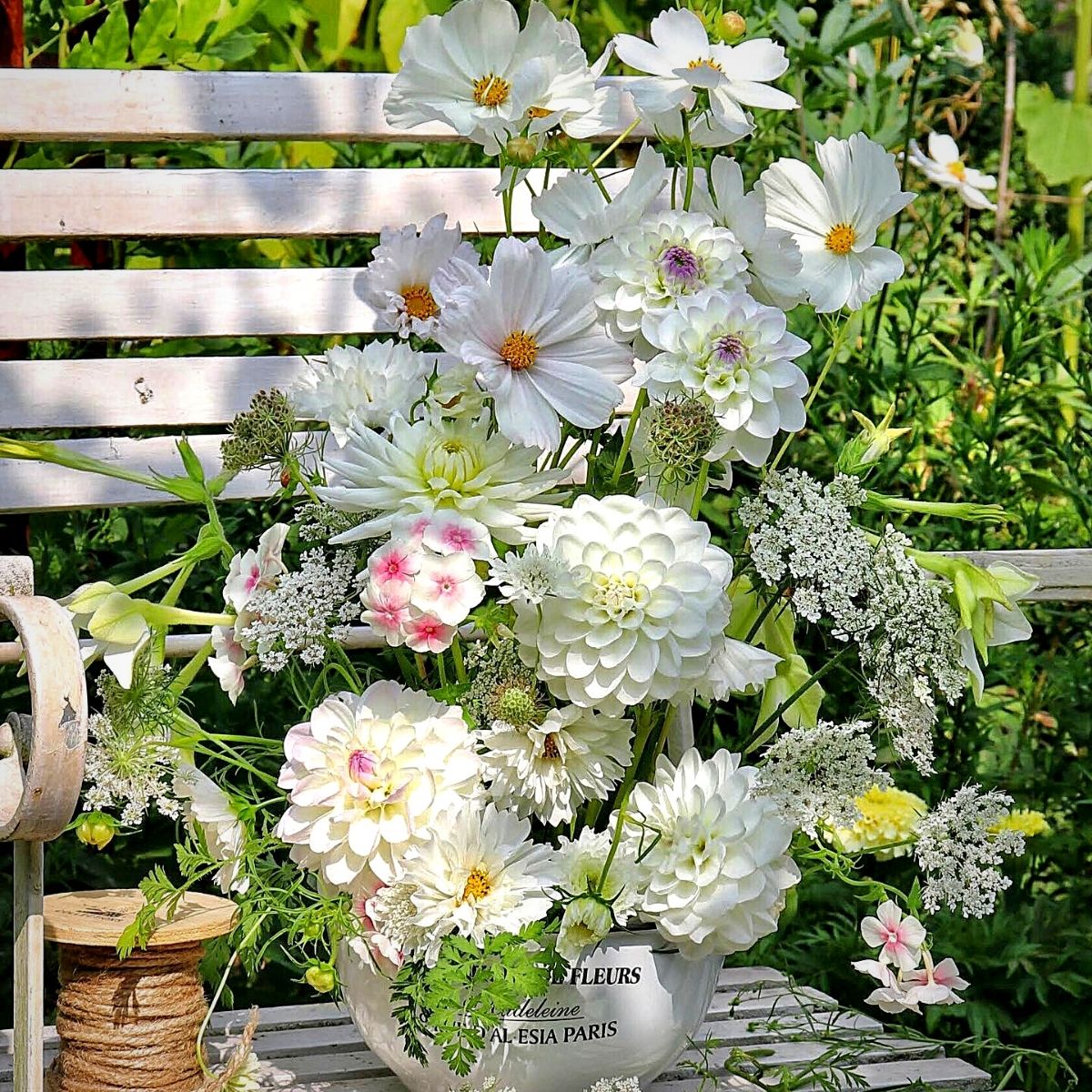
Photo by @mycountrycottage
There also exist sustainable water-holding mechanisms such as reusable mesh grids or water-absorbing gels. These gels can absorb and retain water, providing hydration to flowers, as well as structural support without the environmental drawbacks associated with floral foam. A practical florist may find these products invaluable.
Flower frogs or kenzans, which are metal or glass devices with small spikes that hold flower stems in place, are also a handy alternative. They can be used and reused for multiple arrangements and eliminate the need for floral foam. Additionally, wood stools, and moss can be used as well, in floral arrangements.
"The worst thing for me is the #asmrfloralfoam trends loved by teens etc. If you have teen children please get them to spread the word on this mindless pollution. 😢"
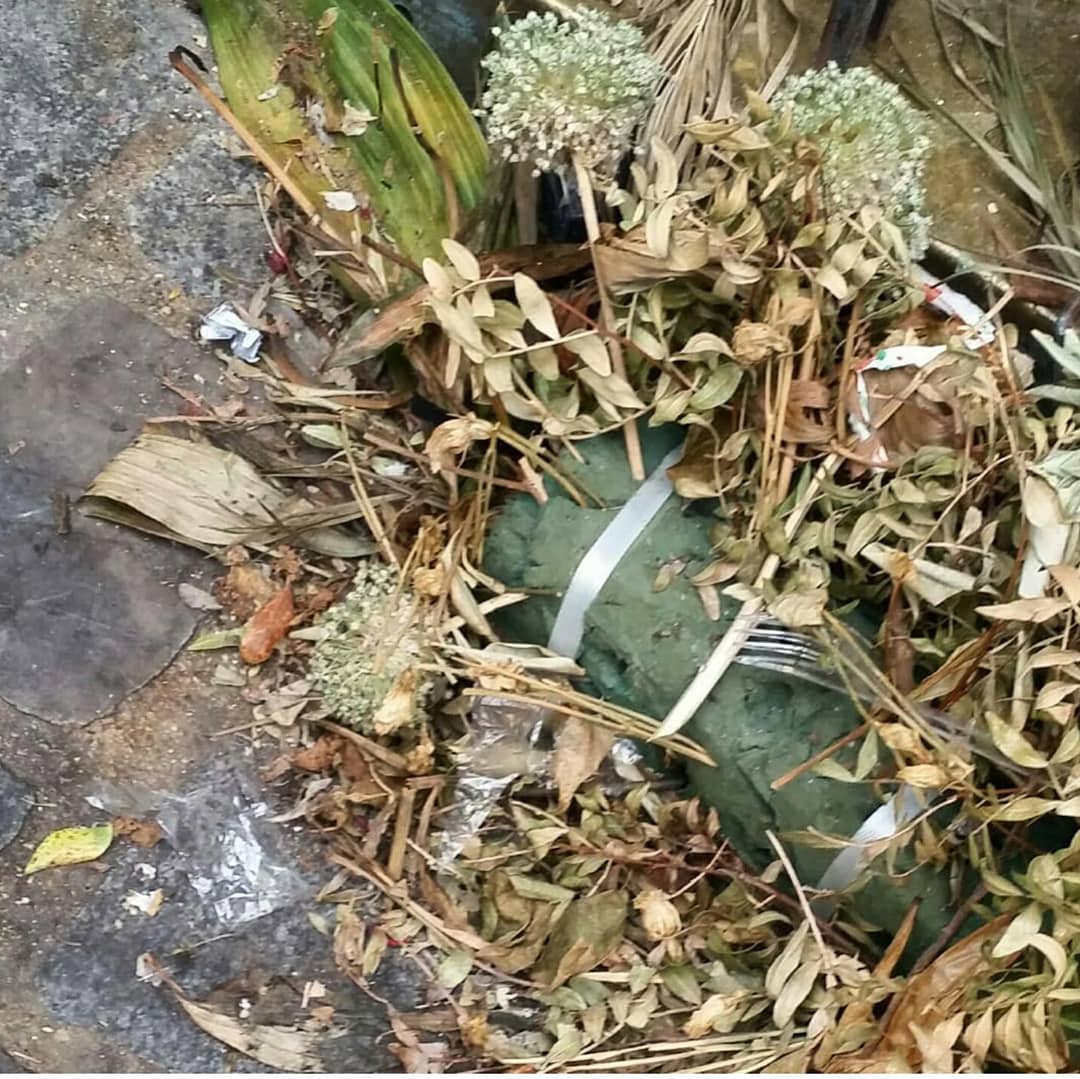
91% of plastic isn't recycled. Instead, it ends up as a landfill, incinerated, or in the environment - 8 million tons dumped in the ocean each year, the vast majority being single-use items. It's time to rethink what a tribute is and what these designs are saying. There is always an alternative." by@nofloralfoam
Point To Ponder
As convenient as floral foam may seem, its shortcomings outweigh its benefits. Once hailed for its handiness in the flower industry, it is increasingly being documented as an environmental and health threat. As a responsible society, it therefore is crucial to explore sustainable alternatives that minimize harm to the environment and human and wildlife health, while still allowing for creative and beautiful floral arrangements.
Perhaps it's an idea as an industry to completely ban plastic foam, as the Chelsea Flower Show has done in 2021. (The @the_rhs has been the biggest supporter of #nofloralfoam with the banning of plastic foam from all exhibitions and shows.)

